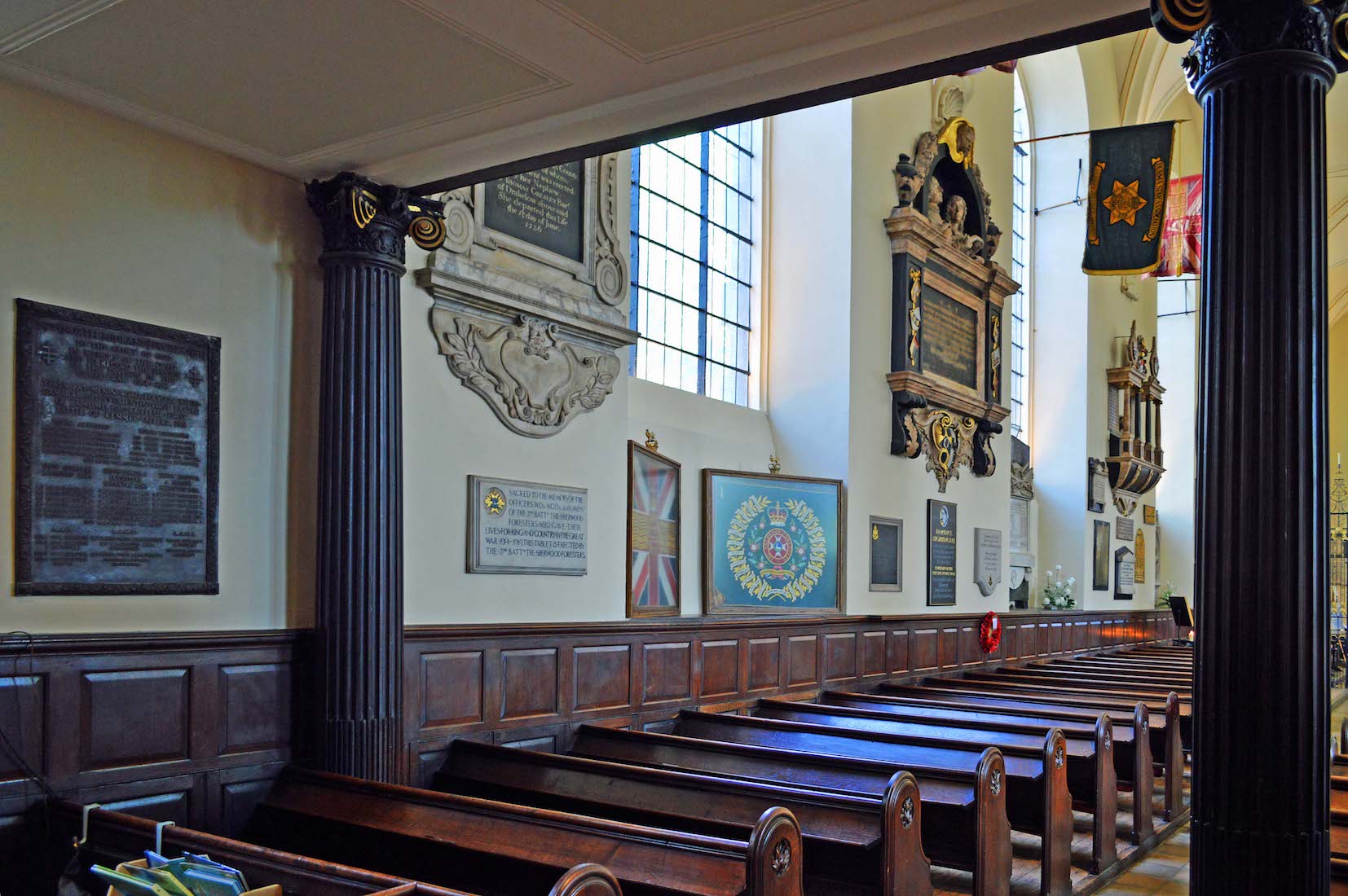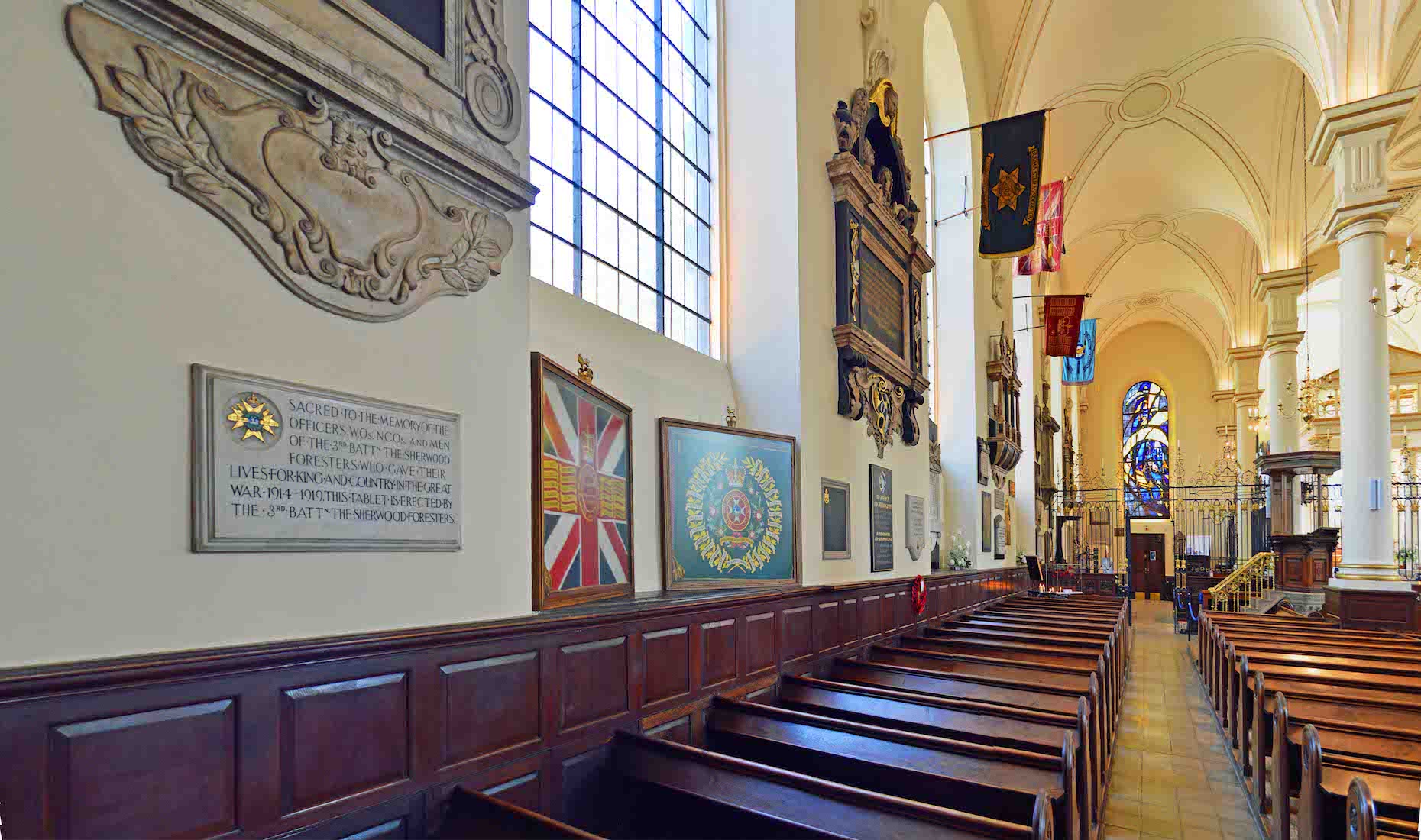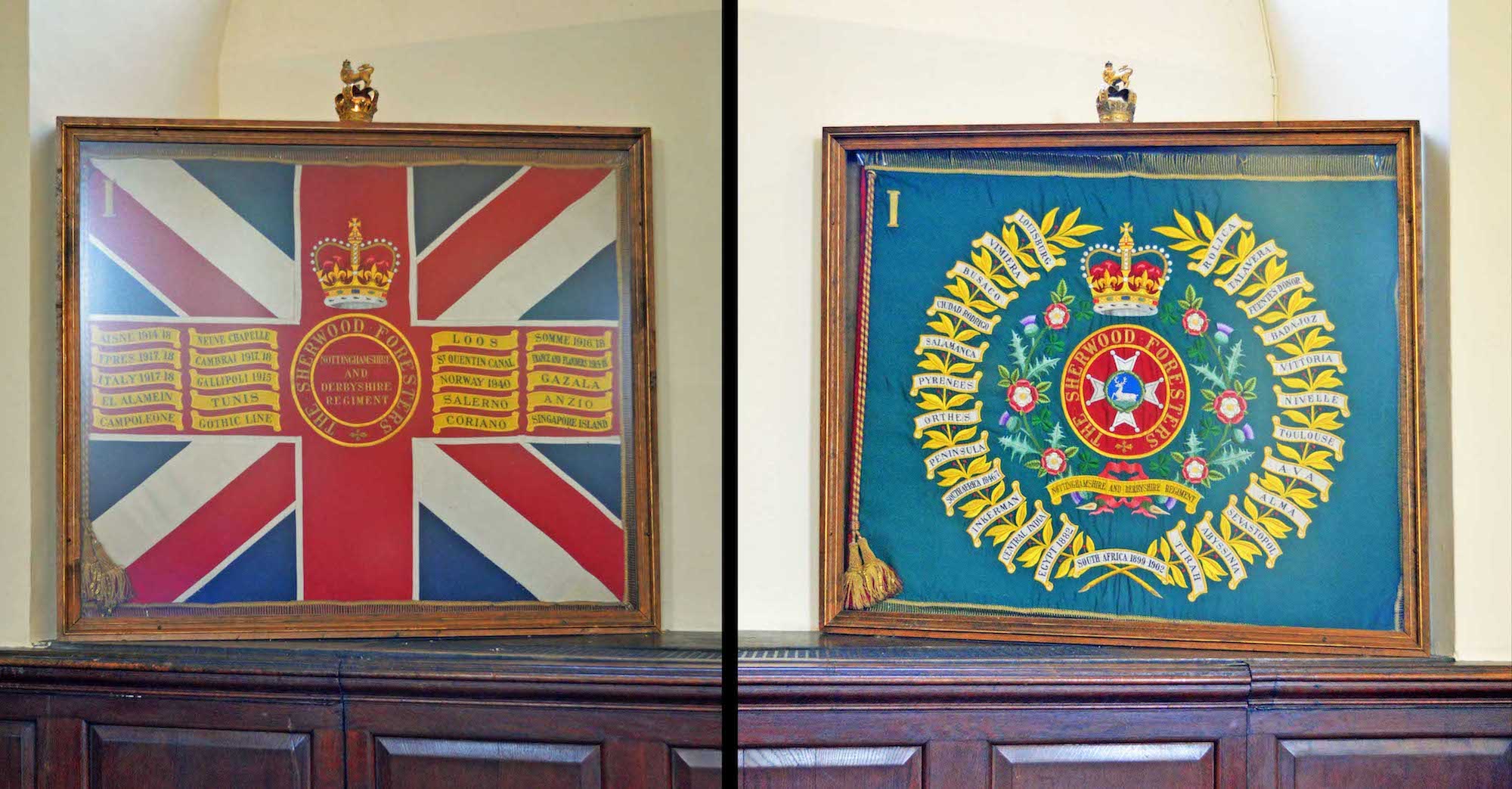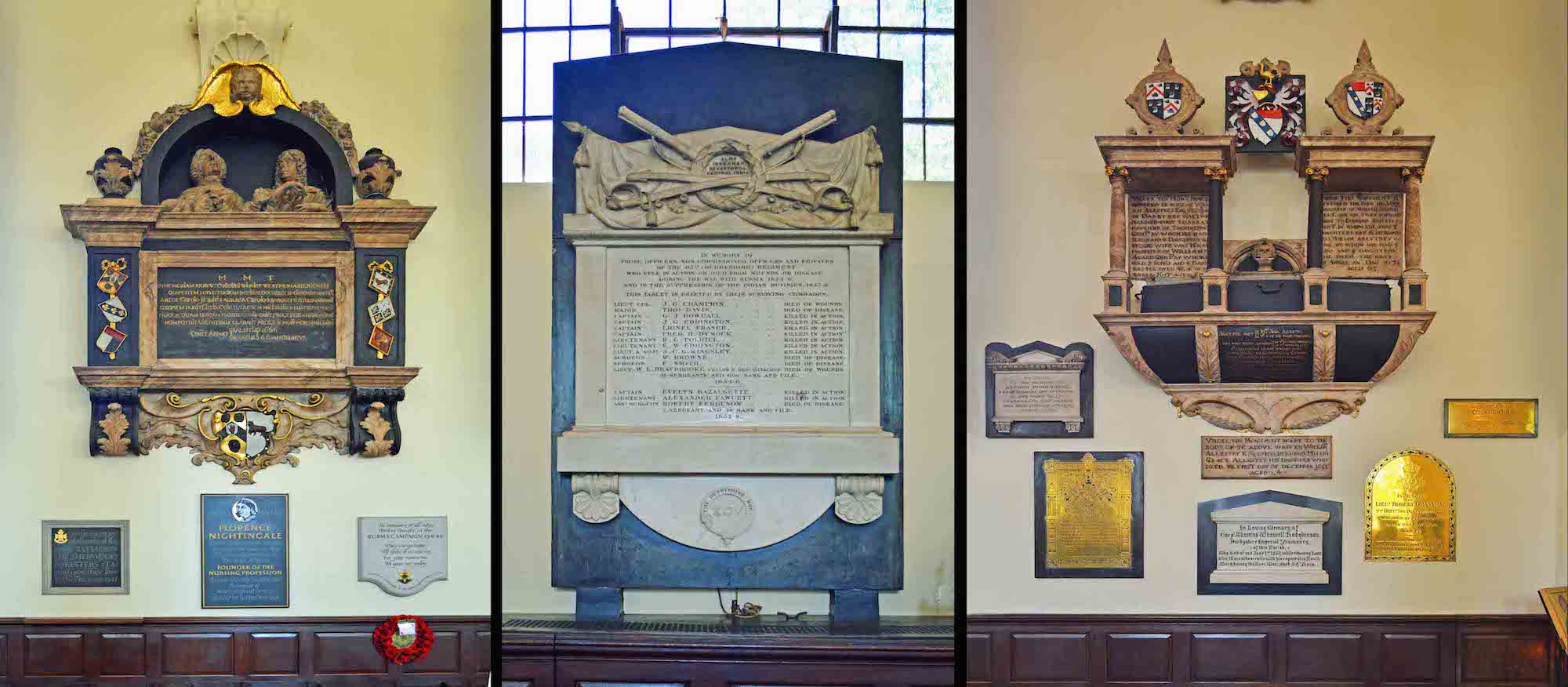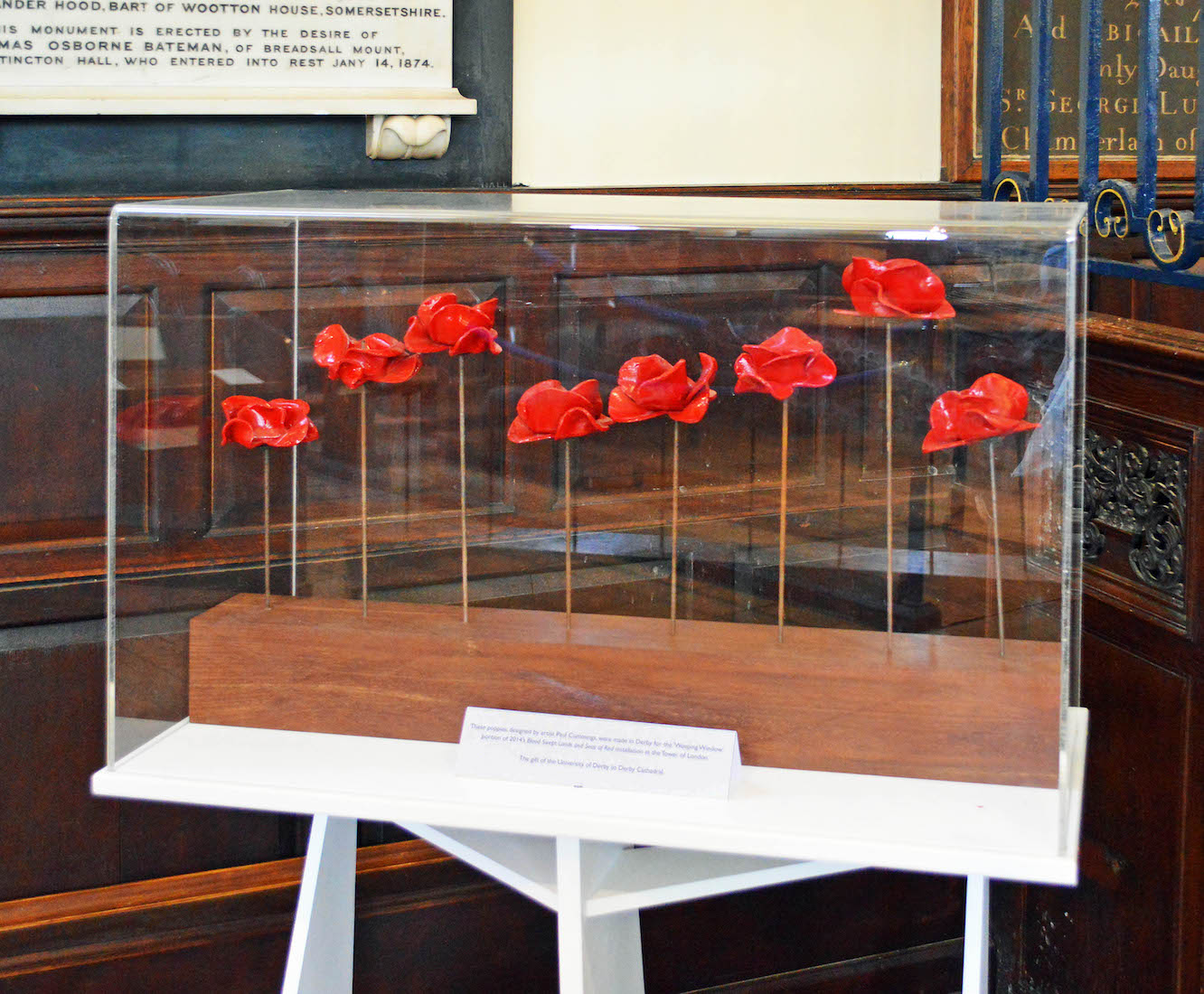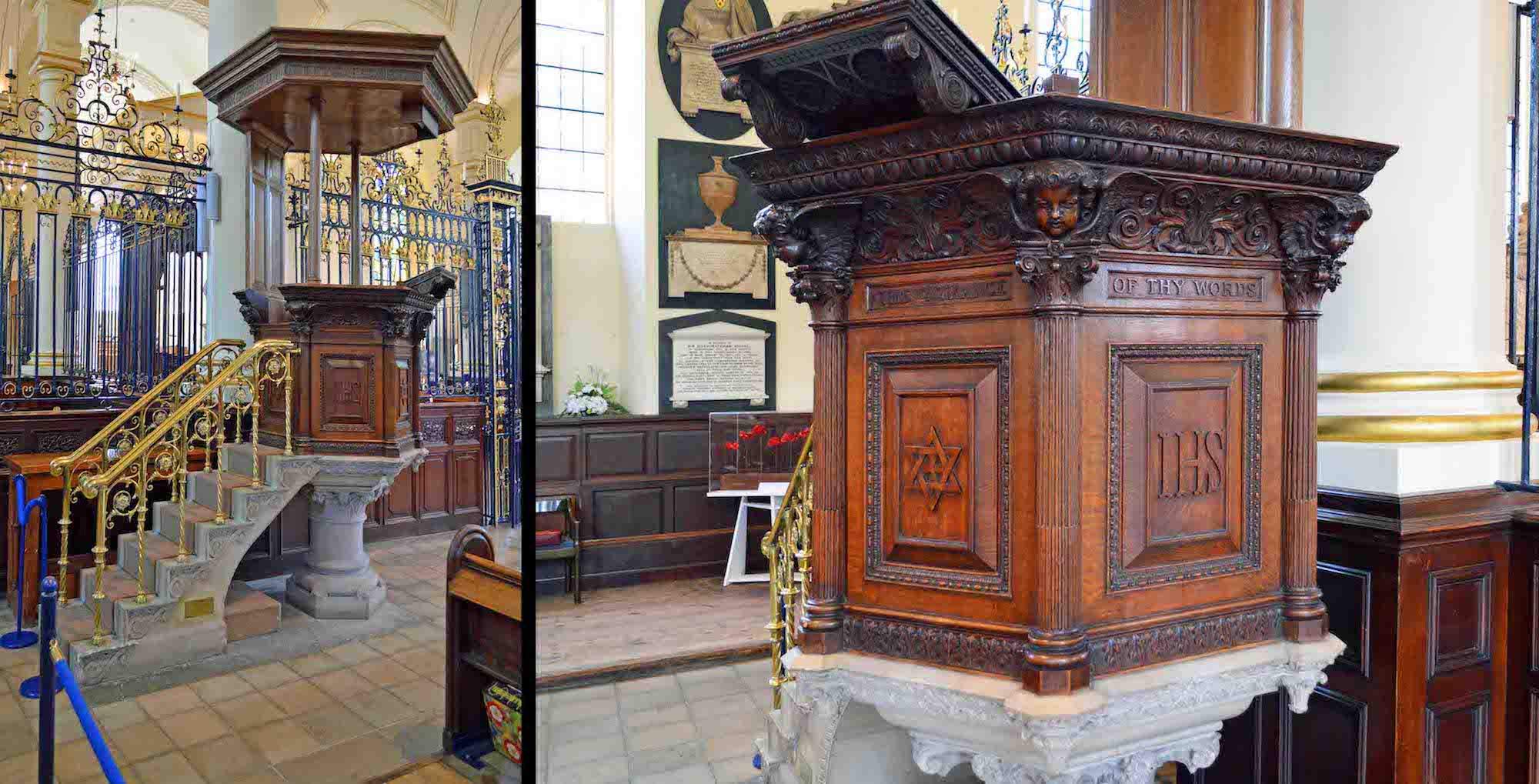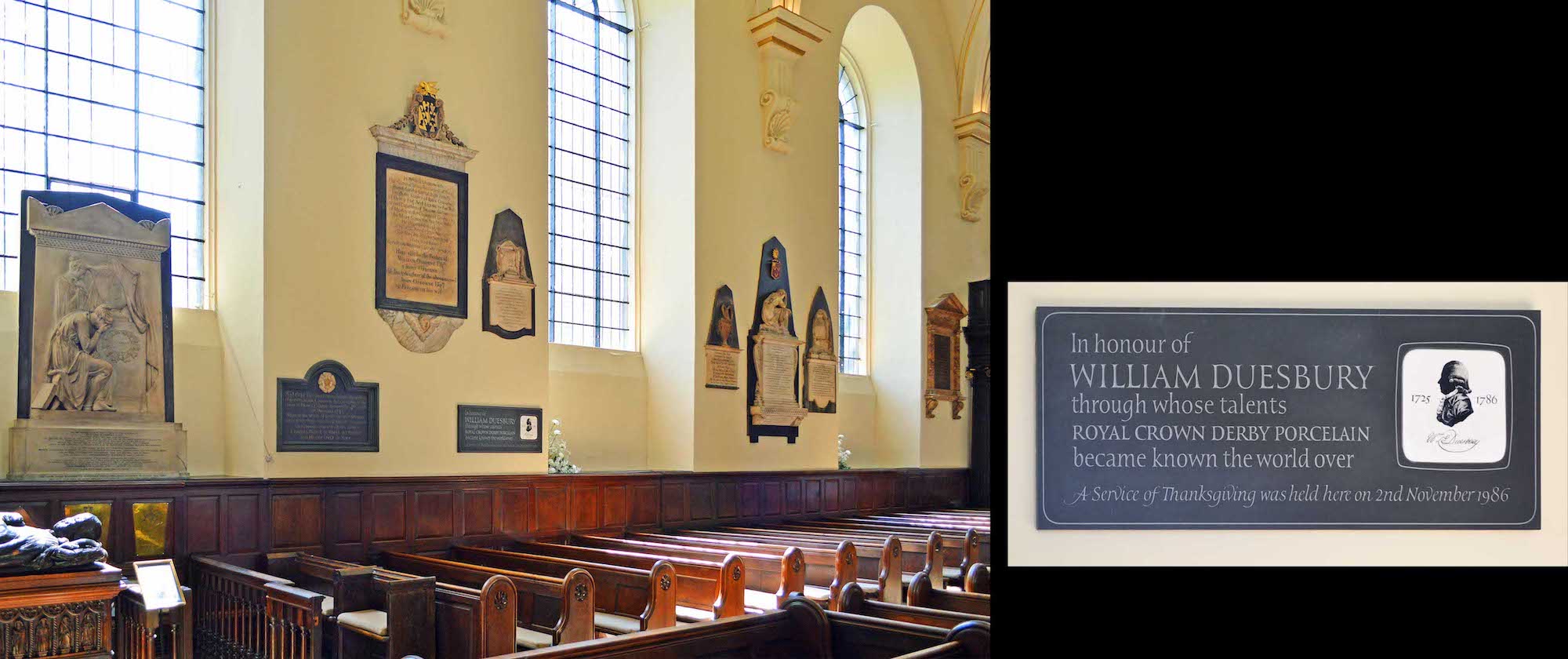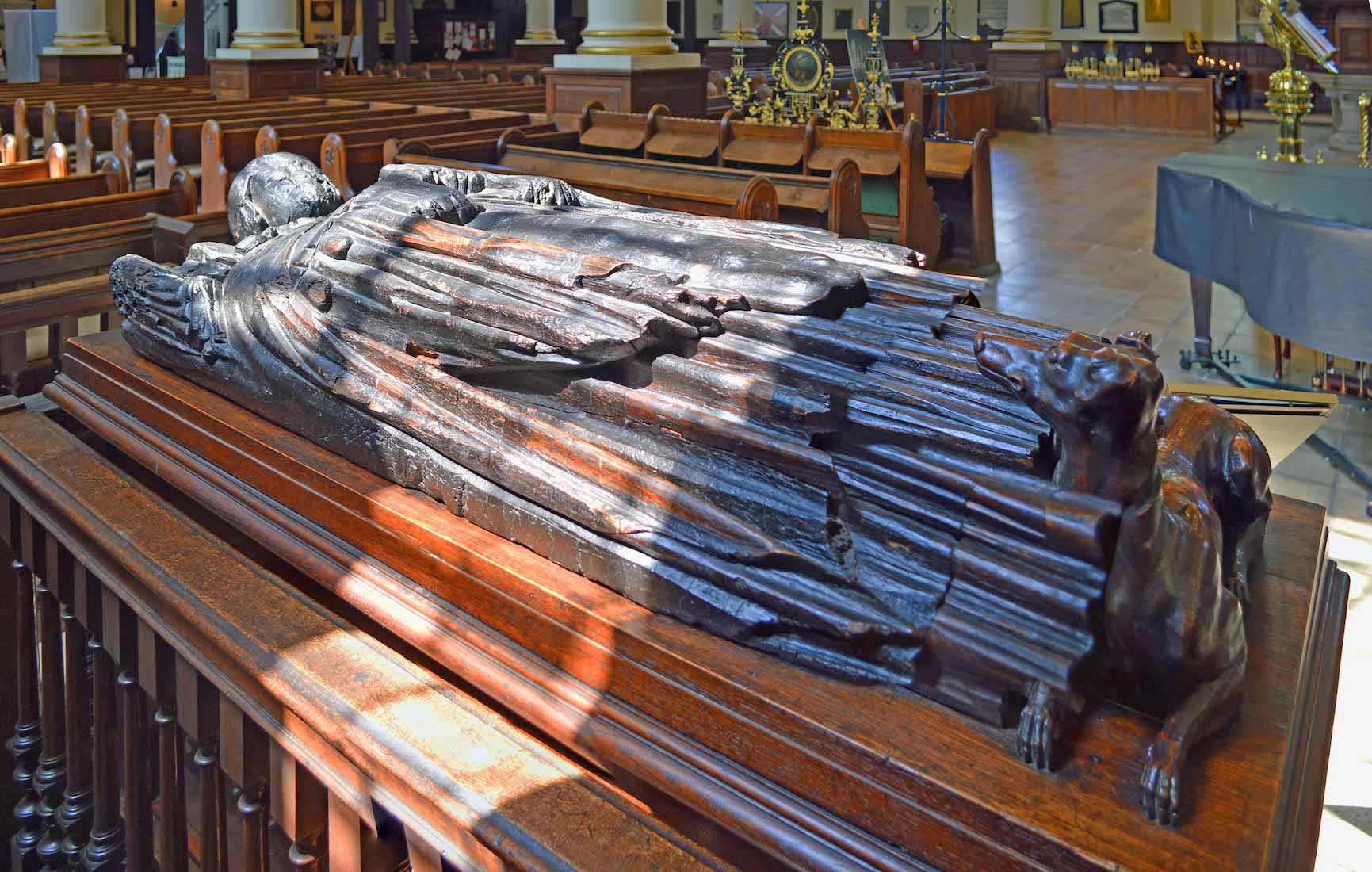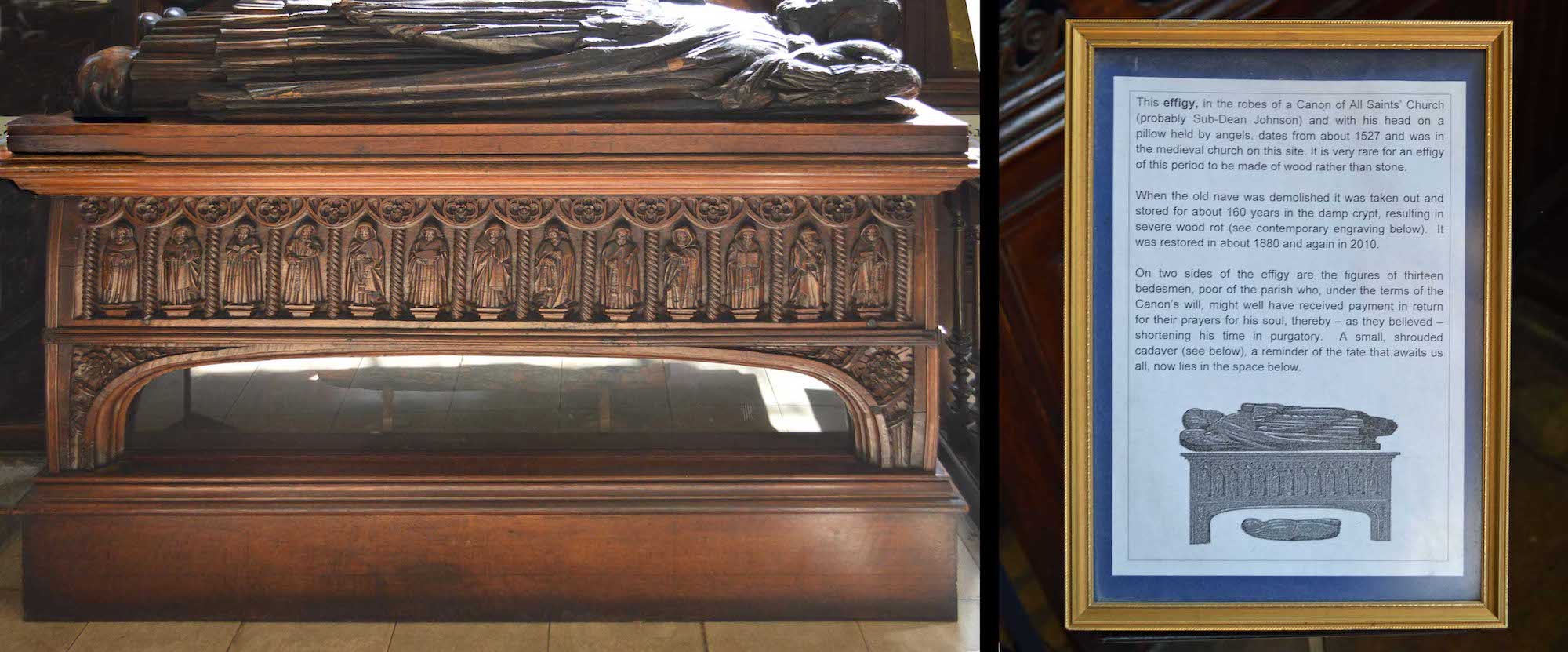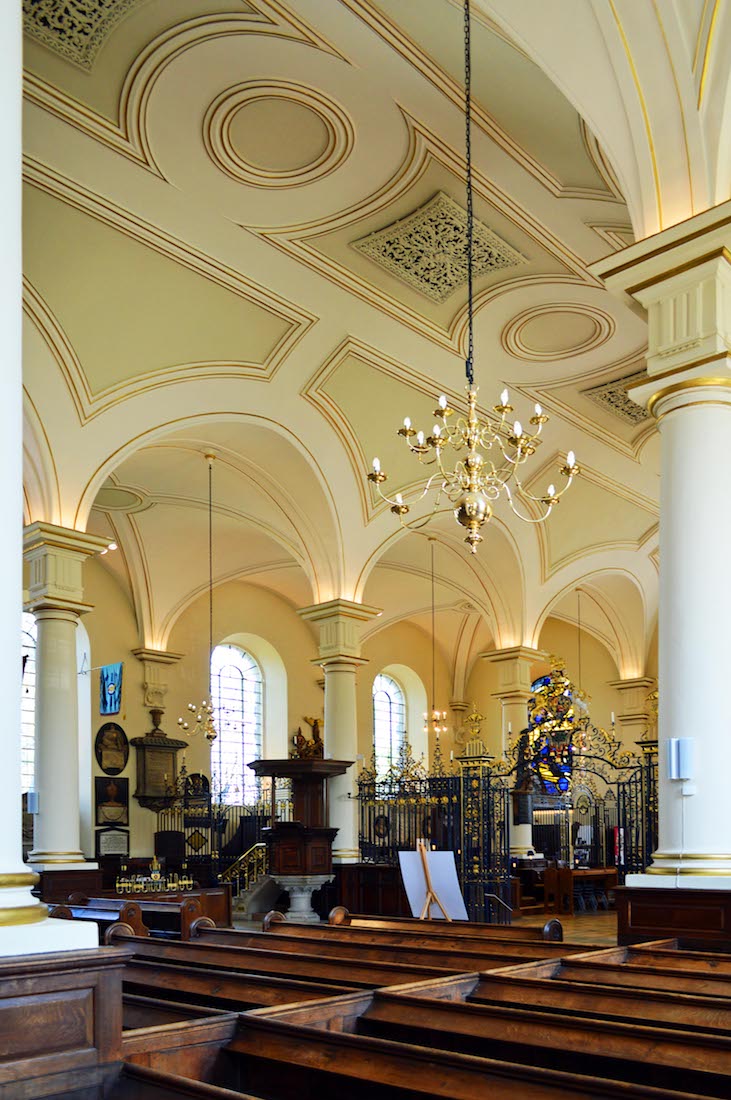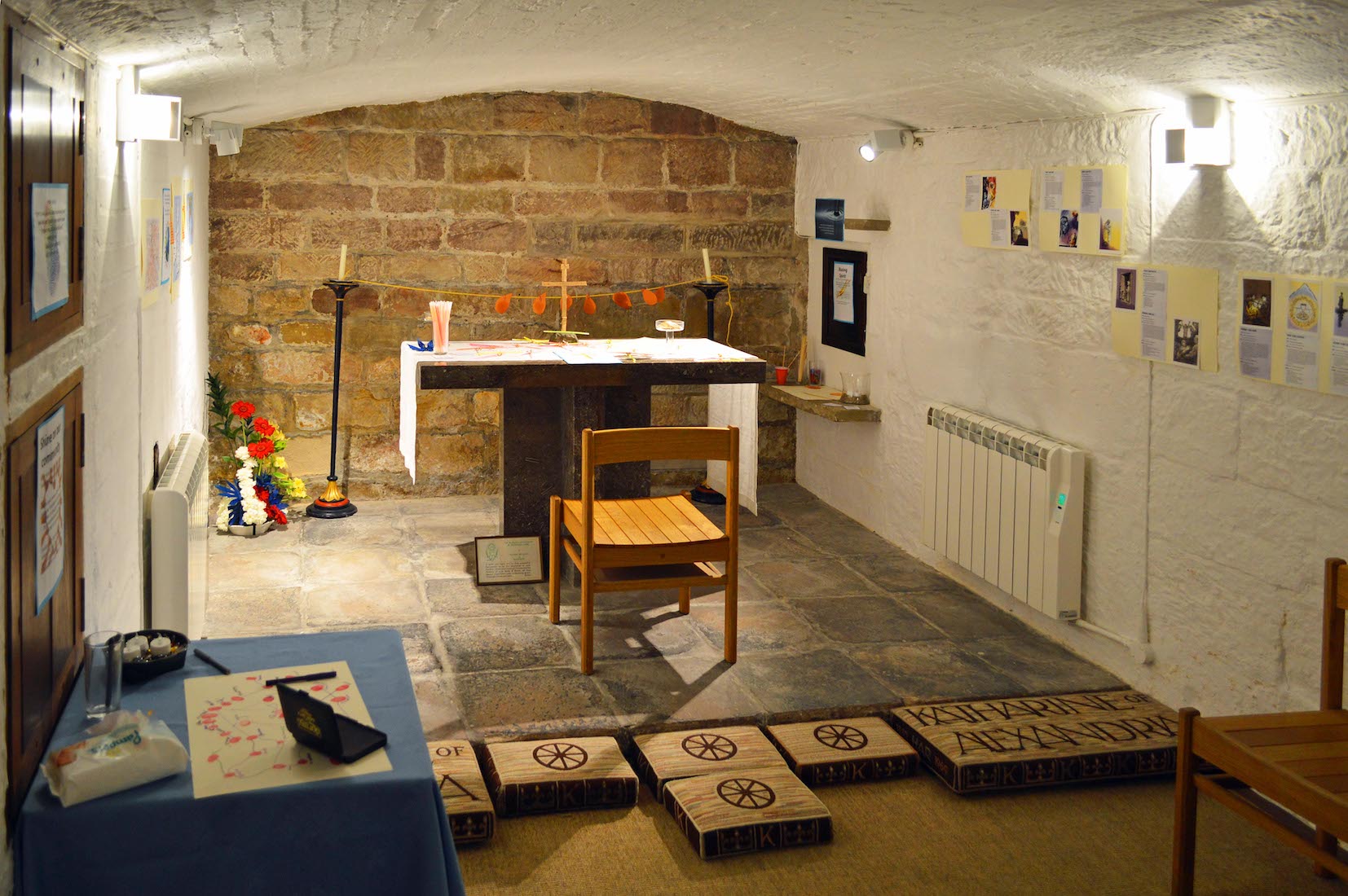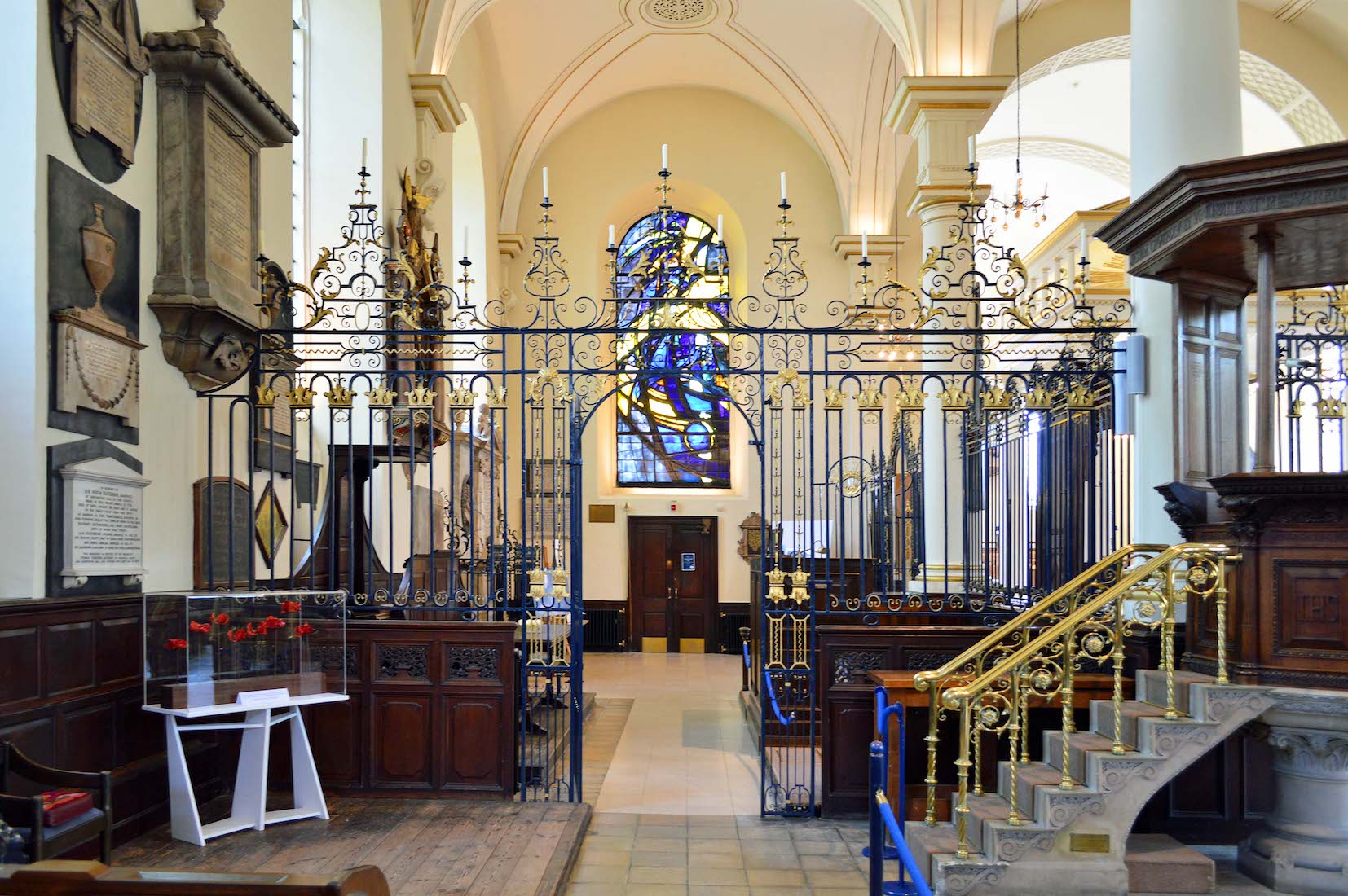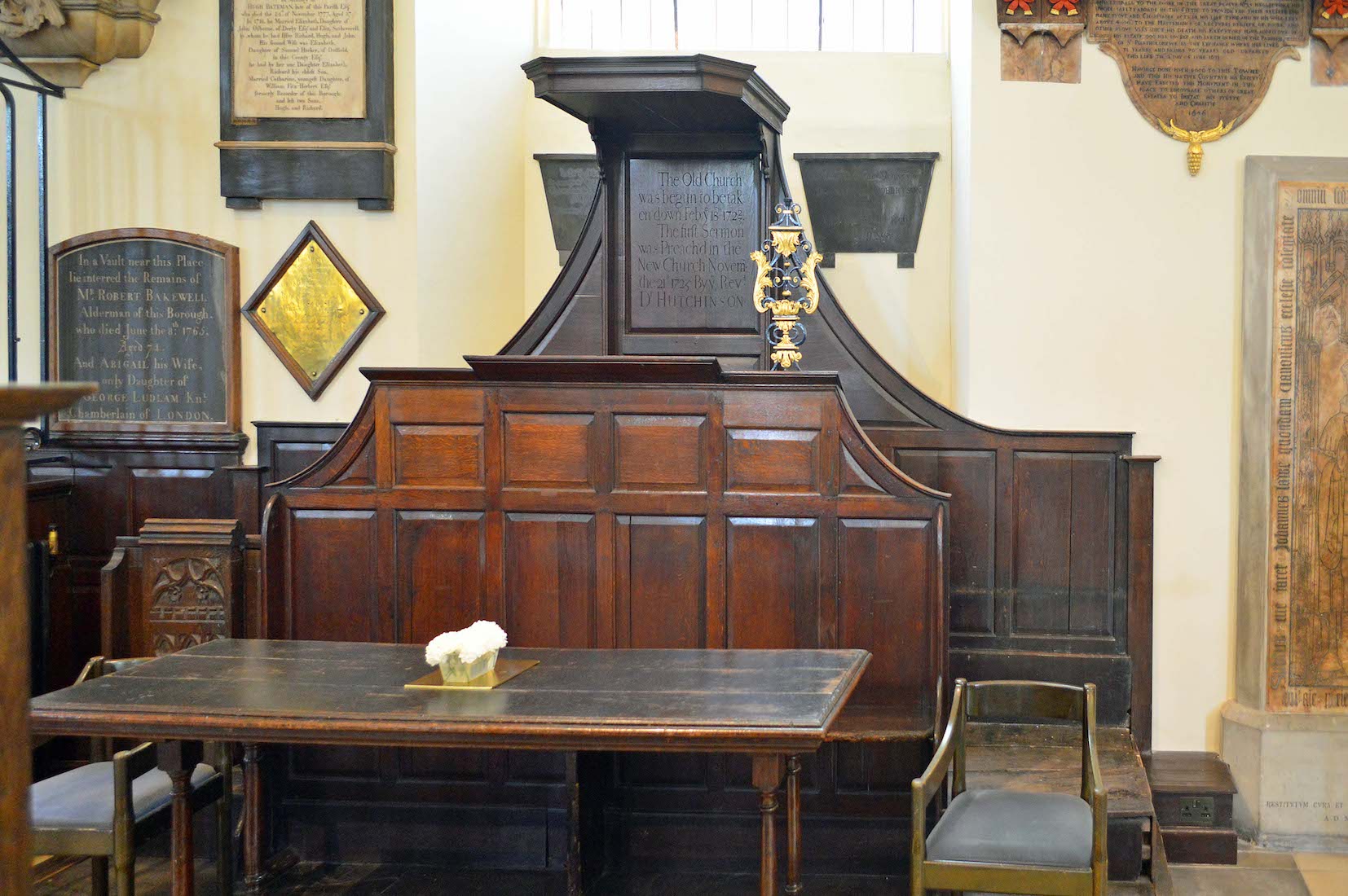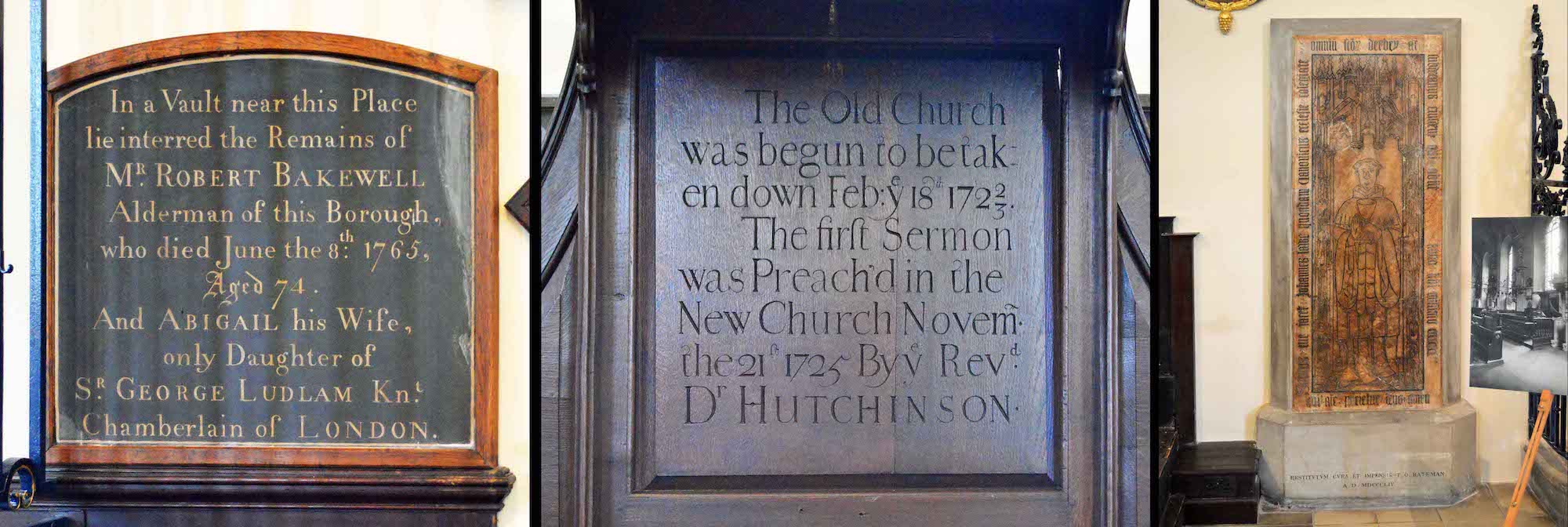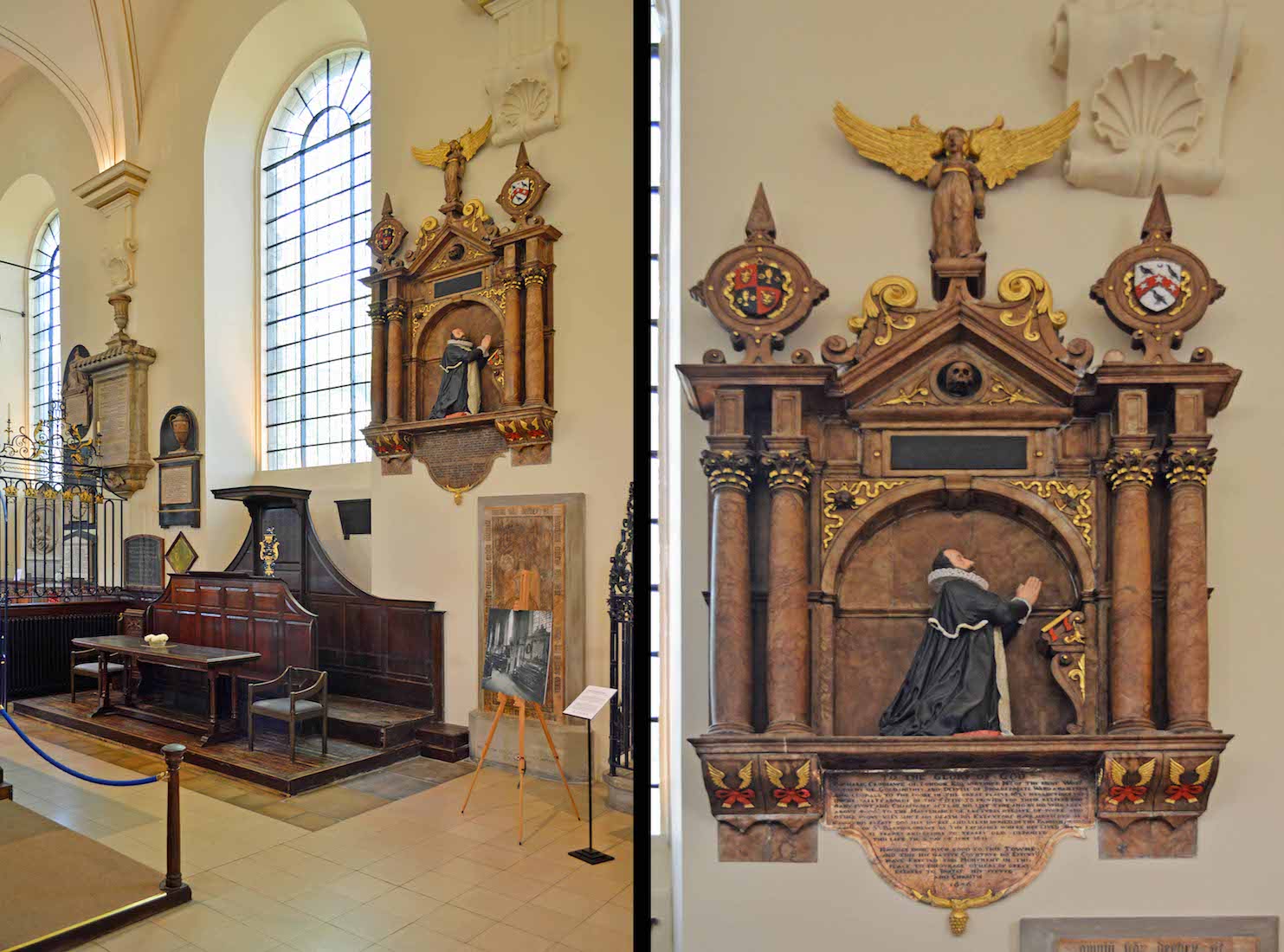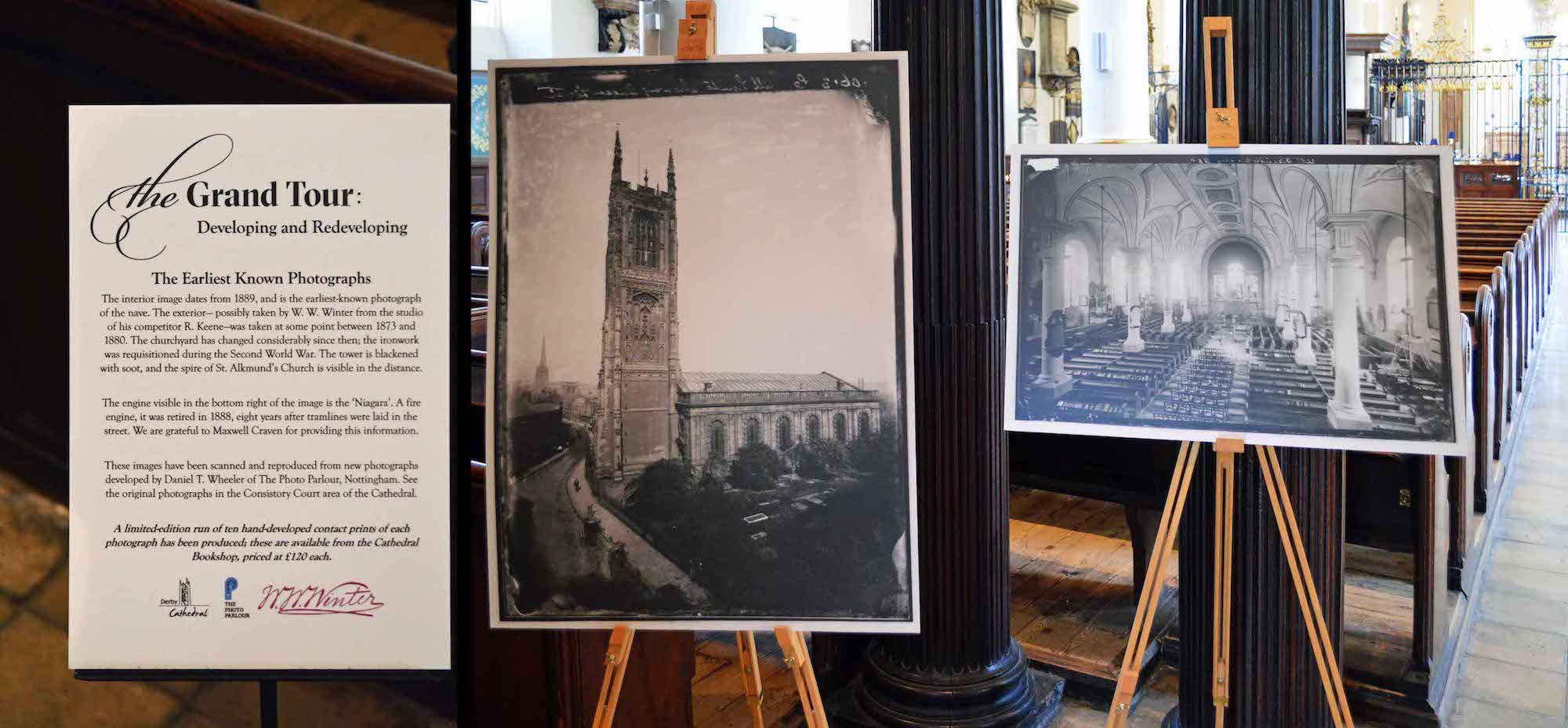
The easels by the West door display two historic photographs of the Cathedral. These are interesting because they are the earliest known photographs of the Cathedral. The interior image dates from 1889, and the exterior photograph was taken at some point between 1873 and 1880. Old photographs are useful for comparing the ‘then and now’. PLAN
22. CHILDREN’S CORNER

A children’s corner is sited in the Northwest corner of the nave. Most cathedrals (and churches) have an area set aside for children, often to cater for children too small to be taught in a ‘Sunday School’.
23. NORTH NAVE WALL
We are now standing under the balcony, and from here look out along the North nave wall. We can see various plaques and memorial tablets. Most of these are only of local interest, although we shall find mention of some well-known people too.
24. NORTH AISLE
Coming out from under the balcony we can see the full length of the North aisle. The main body of the Cathedral does not feature any stained glass windows; instead it was designed to allow natural light to flood in through the large plain glass windows. Looking carefully at the wall at left, we can identify various items shown in the following five photographs.
25. SHERWOOD FORESTERS
These two boards remember the Sherwood Foresters (Nottinghamshire and Derbyshire Regiment) which was a line infantry regiment of the British Army in existence for just under 90 years, from 1881 to 1970. In 1970, the regiment was amalgamated with the Worcestershire Regiment to form the Worcestershire and Sherwood Foresters Regiment, which in 2007 was amalgamated with the Cheshire Regiment and the Staffordshire Regiment (Prince of Wales’s) to form the present Mercian Regiment. The lineage of the Sherwood Foresters is now continued by the 2nd Battalion, Mercian Regiment.
26. NORTH NAVE MEMORIALS
These memorials are found along the North wall of the nave. At centre is an Honours Roll for those of the 95th Derbyshire Regiment who died in the War with Russia in 1854 – 56, and in the suppression of the Indian Mutinies in 1857–58. There are other memorials here including for some who died as long ago as 1655. The blue plaque at left is for Florence Nightingale, 1820 – 1910. Although Florence was not born in Derbyshire, her links with the county can be traced through her family. She was, in fact, from a wealthy, reformist Derbyshire family who kept homes in both Derbyshire and Hampshire.
27. RED POPPIES
These red poppies on display near the pulpit were designed by artist Paul Cummings. They were made in Derby for the ‘Weeping Window’ portion of the 2014 ‘Blood Swept Lands and Seas of Red’ installation in the Tower of London. This is the gift of the University of Derby to Derby Cathedral.
28. PULPIT
We now find ourselves by the pulpit. The pulpit was designed by Temple Moore and dates from 1873. The text is from Psalm 119: ‘The entrance of Thy words giveth light.’ Notice the angel at each corner. It is from the pulpit that the Word of God is proclaimed Sunday by Sunday.
29. LECTERN AND EFFIGY
Across from the pulpit is the traditional brass eagle lectern. However, this splendid lectern has heavy decorative (and presumably adjustable) supports standing on the lion feet. Sunday Bible readings are given from the lectern. In the nearby corner is an old effigy.
30. DECORATIVE RAILINGS
Between the front two pillars on either side of the nave is a low decorative screen. On the North side we find The Corporation Pew with a screen representing the City of Derby. Created in 1972 by Anthony New it incorporates a number of symbols to represent the city as well as areas further afield. At centre is the Derbyshire coat of arms with the motto ‘bene consulendo’ (by good counsel). On the South side is a beautiful wrought iron, gilded screen created by Robert Bakewell in the 1730s which decorates the Mayor’s Pew – a pew occupied by the Mayor on civic occasions. The central design is a local symbol known as the ‘Buck in the Park’.
31. SOUTH NAVE WALL
The wall of the South nave again contains a variety of memorial tablets, mostly of local interest. However there is a tablet ‘in honour of William Duesbury through whose talents Royal Crown Derby Porcelain became known the world over.’ There is reference to a service of thanksgiving which was held in the Cathedral in 1986.
32. OLD EFFIGY
The fine wooden effigy on a tomb-chest may represent Robert Johnson who was canon here c 1527. The effigy is 1.7 m long and shows a priest in clerical dress imcluding a cope. His hands are in prayer, and his head, resting on two cushions, is supported by two reclining angels. There is a dog at his feet.
33. TOMB-CHEST DETAIL
During my visit, the recess beneath the tomb-chest was empty, but in the past it has been the resting place of a wooden male cadaver 0.8 m long. This had the face visible, but a shroud covering the head. Just below the effigy is a row of thirteen bedesmen – poor men of the parish who may have received payment for their prayers for the Canon’s soul.
34. VIEW ACROSS THE NAVE
As we prepare to leave the nave we take a view across to the North side. This is a handsome Cathedral!
36. SAINT KATHARINE’S CHAPEL
St Katharine’s Chapel is a place for quiet contemplation and prayer. Two large kneelers proclaim that this is Katharine of Alexandria. The modern St Katharine’s Chapel has been created from one of the original vault chambers. A simple grave marker depicts the local artist Joseph Wright, and a tablet acts as a reminder that Bonnie Prince Charlie demanded a service be held here for his officers before he abandoned his threat upon the English throne. St Katharine (Catherine) is mostly remembered today for her supposed martyrdom on a spiked wheel, and this is pictured in some of the kneelers.
38. CONSISTORY COURT
The canopied wooden structure of the Consistory Court was set up in 1643 and reinstated in the new church in 1725. The Court was used for the hearing of ecclesiastical legal matters, usually with the Chancellor ‘in the chair’; municipal legalities would also be heard.
39. COURT ITEMS
There are several items of interest in the Consistory Court. At left is a memorial to Robert Bakewell who died in 1765. Unfortunately, this is not the famous wrought ironsmith who died in 1752! The text on the Court furniture reads: ‘The Old Church was begun to be taken down Feby 18 172⅔. The first Sermon was preached in the New Church Novem. the 21st 1725 by ye Revd Dr Hutchinson.’ At right is a tombstone memorial to T. O. Bateman who died in 1854.
40. CONSISTORY COURT AND CROWSHAWE MONUMENT
This view of the Consistory Court shows a memorial on the wall above. This memorial is to Richard Crowshawe, Master of the Goldsmiths’ Company, who died i


